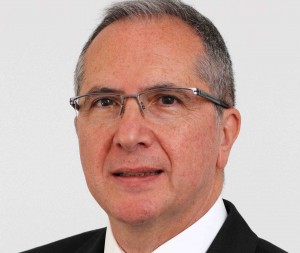The result is a strong demand for advanced tools and silicon intellectual property (IP).
For our customers, high-impact EDA and IP are more differentiating than ever before, making deep collaboration with the right supplier crucial. Synopsys benefits from these trends and our important investments in R&D continue to pay off.
Looking at the continued technology evolution, Synopsys enables the most advanced designs in the world. Be it design at the most innovative FinFET technology nodes, or advanced design at more established nodes, customers rely on Synopsys whenever they want competitive differentiation.
Over the past 10 years, the use of third-party commercial IP has gone from experimental to mainstream. In parallel, IP complexity has evolved from simple cost-advantaged blocks, to a broad portfolio of all the main interface protocols, to extremely complex, state-of-the-art and rapidly evolving next-generation solutions.
Today, software drivers and even entire operating systems can be delivered with IP cores, creating IP subsystems. Recently, we even announced a new low-power IP subsystem for sensors, aimed at the emerging market for the Internet of Things. Something that makes it different is that it’s an integrated, pre-verified system that sensor developers can purchase off-the-shelf, rather than developing and assembling each component themselves.
The amount of IP that the top 20 semiconductor vendors consume has increased by 5X over the past few years. Synopsys has about 1,900 engineers designing commercial IP blocks, giving us the number-one position in interface, embedded memories and analog IP.
We estimate that only about 50 percent of these types of blocks are outsourced today, and we expect this market segment to continue to grow, driven by more outsourcing and by additional protocols and titles, such as interface IP for sensors.
Europe is well positioned in the fast growing high-performance electronic sensor market with its specialty fabs and foundries. To support our customers in this important area, we’ve been providing simulation tools to help process refinement, and we’ve been collaborating to develop standard iPDKs.
The largest bottleneck in system and chip design today is in verification. Synopsys has been delivering verification solutions for many years in both leading-edge digital verification and analog circuit simulation, where tool performance is key and a complete solution is increasingly a must.
In systems, the need to simultaneously verify hardware and software is growing in equally rapid importance. The combination of emulation, FPGA-based prototyping and virtual prototyping is unique in its breadth and capabilities. In the past, customers typically built and assembled complex FPGA boards in-house to complement their chip simulation and accelerate their hardware/software debugging.
In automotive, for example, our customers are taking advantage of our leading virtual prototyping technology so they can start their software development earlier and accelerate system integration, test and validation.
With the addition of the most comprehensive open debug system, (Verdi), and our verification IP offering, we address the entire verification market with outstanding tools.
By investing more than 30 percent of our revenue in R&D each year, and by employing more than 1,000 engineers who work closely with European companies, Synopsys continues to demonstrate broad strength and technology innovation.
 Electronics Weekly Electronics Design & Components Tech News
Electronics Weekly Electronics Design & Components Tech News




